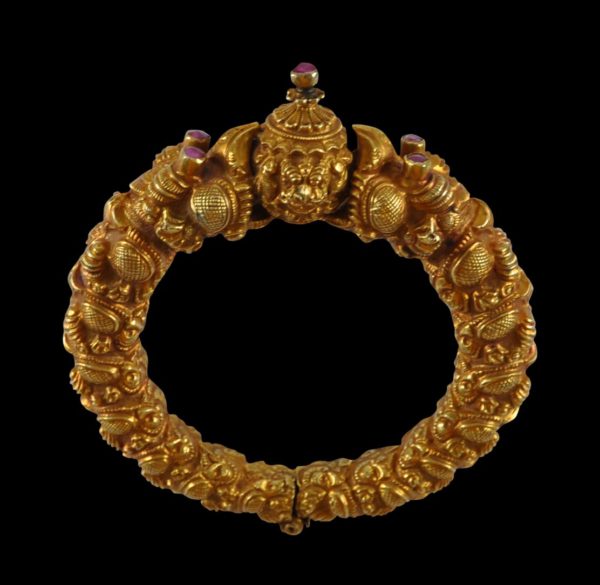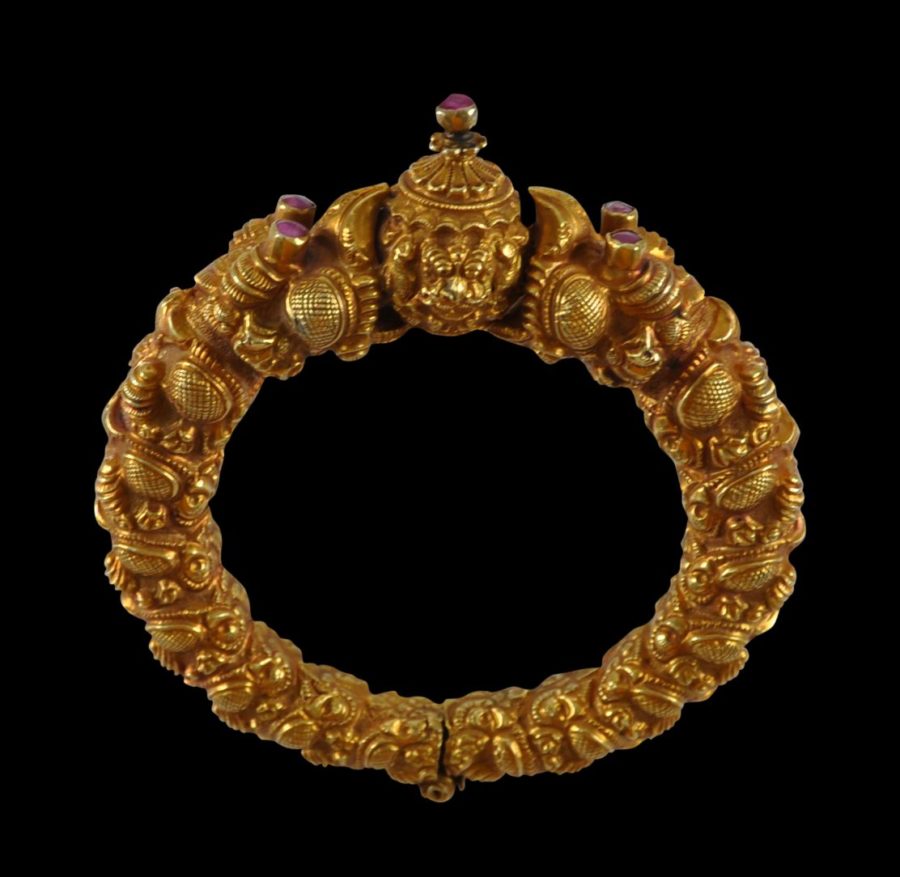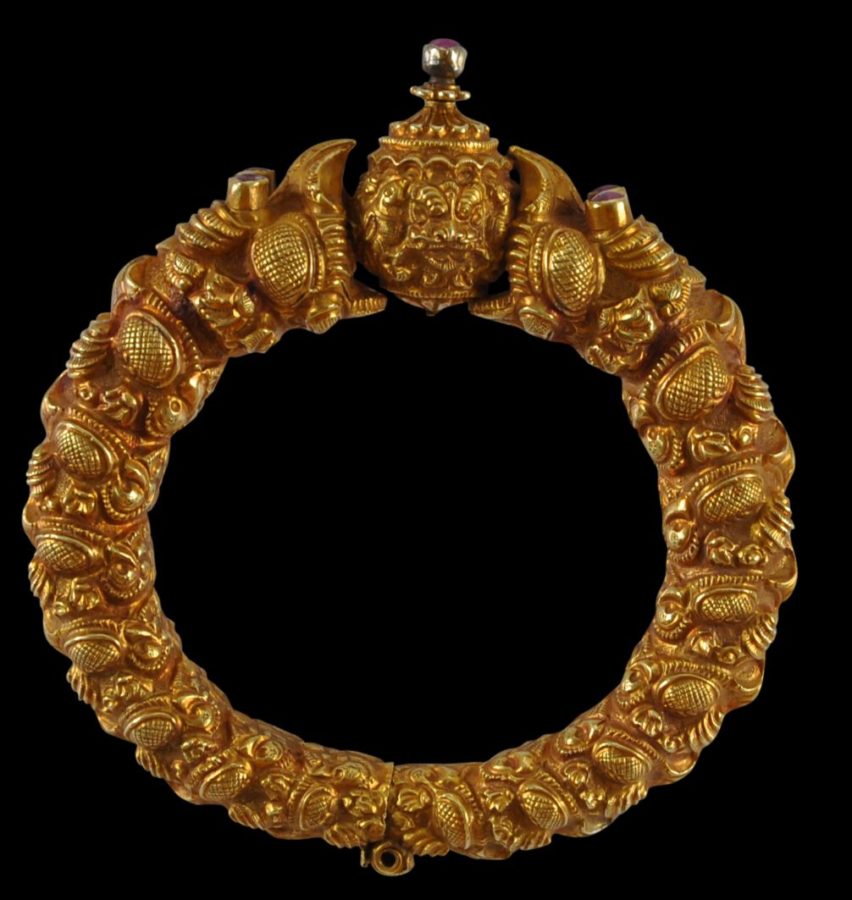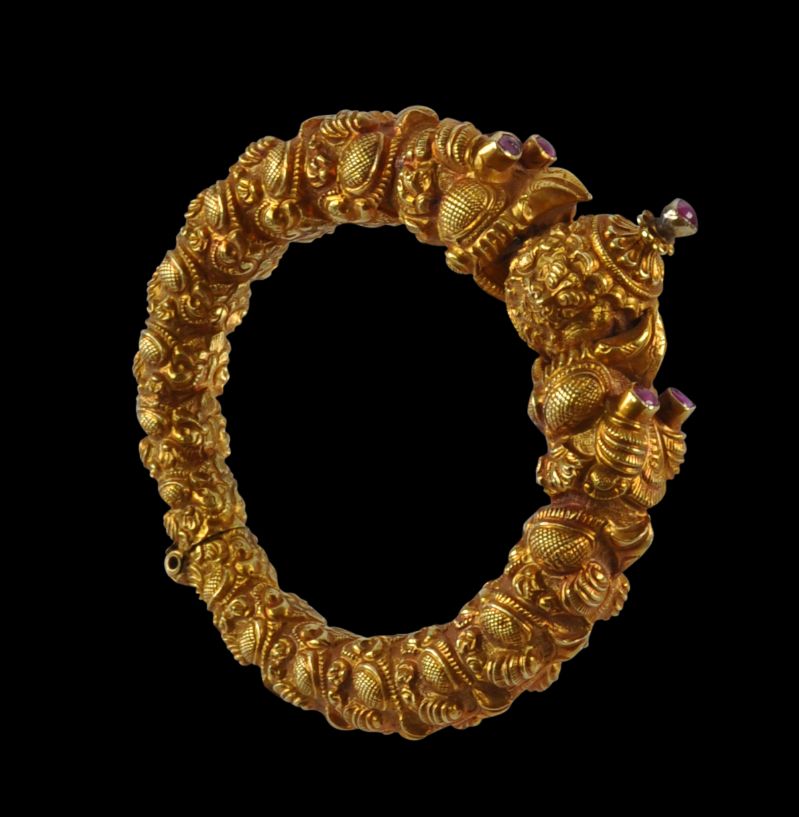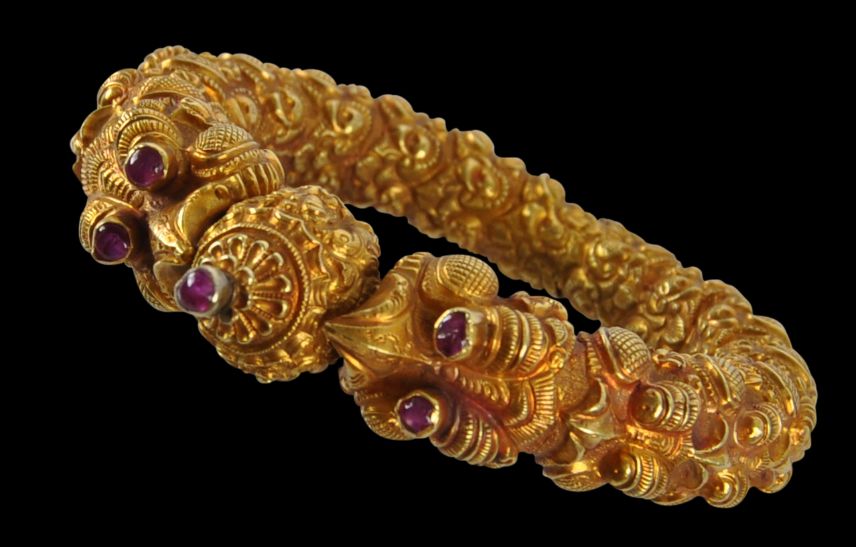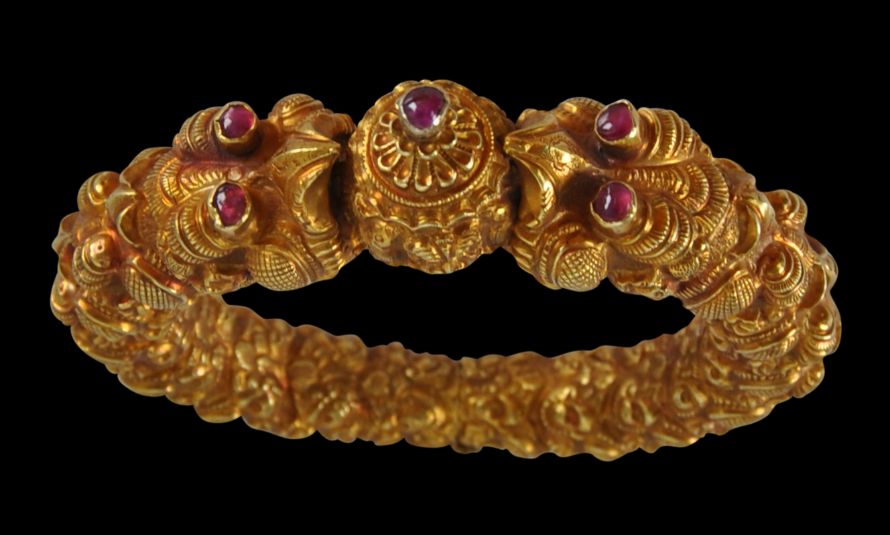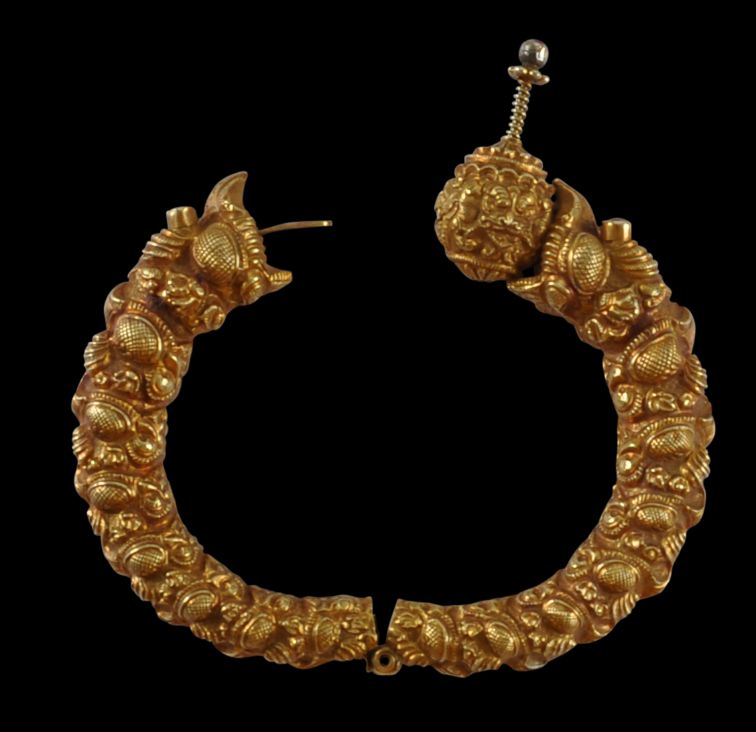This is a splendid bracelet. Of hollow form, but of solid gold (around 15 carats), it comprises two parts that are hinged, coming together with a screw mechanism. It is repoussed and set with rubies. The gold has been tinged with red in the manner that gold in Southeast Asia often was enhanced with red staining. Almost identical examples in London’s Victoria & Albert Museum are illustrated in Stronge, Smith & Harle (1988, p. 93).
It has two fierce makara head terminals. Remarkably, each of the two halves comprises another seven makara heads each disgorging the next head.
Between the principal makaras, in their gaping mouths, is a magical, round sphere decorated in relief with protective kurtimukha masks and modelled on a rudraksha seed that is sacred to Shiva. The jewel is surmounted by a finial that hides a screw that keeps the two halves of the bracelet together, and this is topped with a cabochon ruby.
The eyeballs of the two main makaras also are mounted with cabochon rubies. (There are five rubies in total.)
The screwing mechanism that holds the two halves of the bracelet together screws tightly and firmly. It opens by being turned clockwise.
As mentioned, the decorative appeal of gold in Southeast Asia was enhanced with a surface treatment. The red oxide over the surface was induced by rinsing the completed gold item first in coconut oil. Next it was heated in a solution of sulphur and either kalamansi (citrus microcarpa) juice or tamarind pulp – both of which are sour and thus acidic. Next, it was immersed in a solution of rock salt, alum, table salt and water, until the desired level of red hue was achieved. It is possible that this technique was also used by the goldsmiths of Madras.
This example is particularly fine with the attention to detail that has been paid to its construction.
It is a fine example of South Indian gold work, production of which centred on Madras.
Utracht (1997, p.254) illustrates a very similar example in silver, and comments that such bracelets also were made in gold and that they were given by rajas to their male subjects as a mark of favour. Indeed, examples in gold were made exclusively for royal households. They were also made for the local colonial European market.
See lot 76 in Christie’s London ‘Arts of India’ sale, June 19, 2015 for an almost identical example but with dents.
Our example here is in excellent condition, and is stable and wearable.
References
Stronge, S., N. Smith & J.C. Harle, A Golden Treasury: Jewellery from the Indian Subcontinent, Victoria & Albert Museum/Mapin Publishing, 1988.
Utracht, O., Traditional Jewelry of India, Thames & Hudson, 1997.


